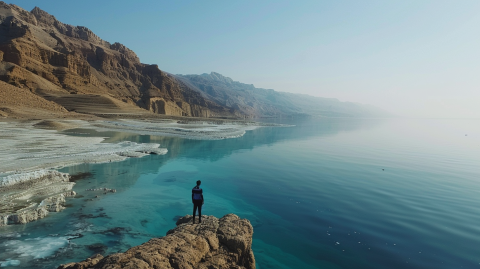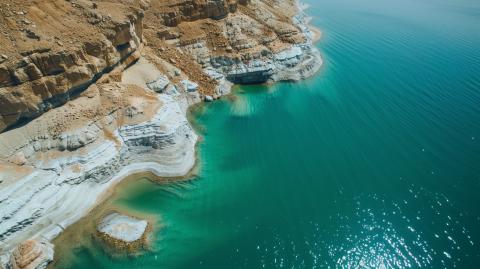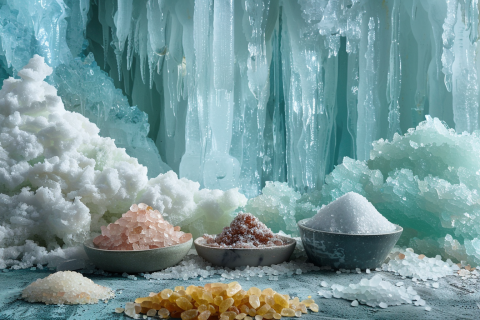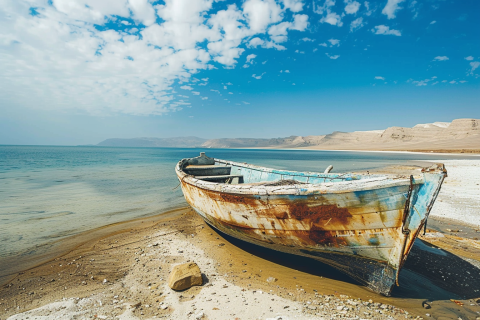Dead Sea Salt Dead Sea Fundamentals
Updated:
The Dead Sea, known for its extreme salinity and unique environmental conditions, hosts a relatively limited variety of life forms. However, the area around the Dead Sea and its freshwater springs support a more diverse array of flora and fauna that have adapted to the challenging conditions of this region. Despite its name, the Dead Sea supports a unique ecosystem, including specialized microorganisms like bacteria and archaea that have adapted to its extreme salinity. The surrounding region is also rich in biodiversity, including rare plant species and wildlife that have adapted to the…
Updated:
The Dead Sea sparks curiosity in many scientists across the globe. It offers a fascinating case study in the science of geology, hydrology, and environmental studies. This unique saltwater lake, bordered by Jordan to the east and Israel and the West Bank to the west, is renowned for its extreme salinity, a characteristic that defies the norms of freshwater bodies and marine environments alike. The science behind the Dead Sea encompasses the interplay of tectonic activity that formed the Jordan Rift Valley, the climatic conditions leading to its high evaporation rates, and the mineral-rich…
Updated:
No matter who you are or where you come from, I’m sure you’ve heard of the Dead Sea. Routed in religion, housed in a strong geographical location and known for its magical mineral composition and therapeutic benefits, it’s one of the best-known natural wonders Earth has to offer. With so much history where do we begin? I think it’s best to start with its formation.
Formation of the Dead Sea
The Dead Sea's formation is a result of millions of years of geological evolution, initiated by the movement of the Arabian Plate away from the African Plate, creating the Jordan Rift Valley…
Updated:
Embarking on the journey of extracting Dead Sea salt uncovers a fascinating intersection of natural wonder and human ingenuity. Nestled at the lowest point on Earth, the Dead Sea is not only a geographical marvel but also a bountiful source of some of the most mineral-rich salt known to mankind. This salt, coveted for its therapeutic virtues, is harvested through a blend of age-old traditions and modern techniques that respect both the environment and the salt's unique properties. In this article, we'll delve into the art and science behind extracting Dead Sea salt, highlighting the methods…
Updated:
For as long as anyone can remember, the Dead Sea has always had this air of mystery and fascination about it. And right at the heart of its allure is Dead Sea salt. People have always thought it's pretty special, not just because it's hard to come by, but also because it's got some pretty cool healing powers. Back in the day, ancient folks swore by it for healing, cleansing, and just generally making everything feel fresh and pure.
Key Takeaways
Geographic Location: Origin: Sourced from the Dead Sea, at the borders of Jordan, Israel, and Palestine.Formation and Composition: Natural…
Updated:
The Dead Sea is one of the world's most remarkable natural wonders, known not only for its hypersalinity—allowing visitors to float effortlessly on its surface—but also for the therapeutic qualities of its mineral-rich salt. Understanding the chemical composition of Dead Sea Salt is not merely an academic pursuit; it has significant implications for industries ranging from cosmetics to alternative medicine, making it an area of…
Updated:
Discover the allure of Dead Sea salt, a treasure trove of therapeutic wonders steeped in ancient traditions and modern scientific acclaim. Unlike your typical sea salt, the Dead Sea variety boasts an extraordinary mineral richness, offering unparalleled benefits for skin health and profound relaxation. Embark on a journey to explore its captivating history and unlock the secrets to rejuvenation and well-being.
Key Takeaways
Ancient Times: Used for health, worship, and cuisine; healing recognised.Egyptian Era: Key in mummification, cosmetics; preserved bodies, beautified skin.Roman Era…







